Written with contributions by Shelby Pritchard, former SDSU Extension Pest Management Specialist.
Originally Submitted: May 27, 2022
With temperatures slowly increasing in South Dakota, expect to see an increase of beneficial pollinators that will be searching for blooming plants. Both non-native and native insects contribute to the process of pollination that is critical for many of the fruits and vegetables we consume. This article will highlight two important pollinators, including the introduced honey bee, as well as the local bicolored striped-sweat bee.
Honey bee (Apis mellifera)
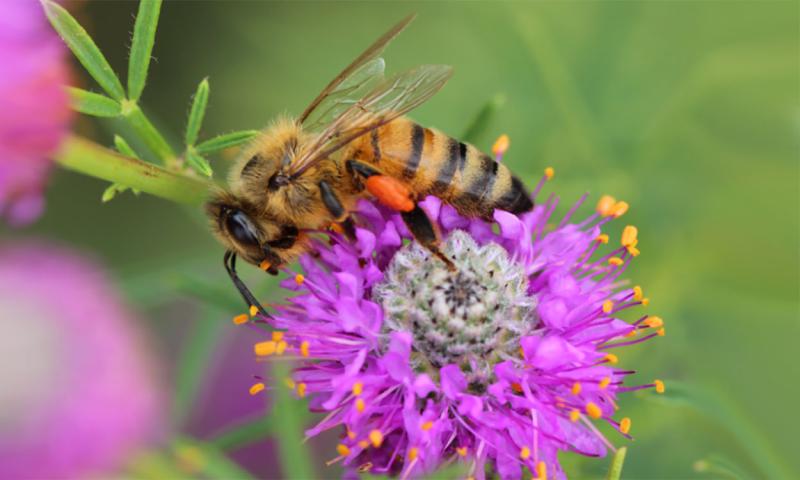
Honey bees are a non-native species that were brought into North America from Europe in the 17th century. Since their introduction, they have played a major role in pollinating everything from agricultural crops to backyard gardens. Honey bees are small, winged insects that are golden brown with dark brown bands across the abdomen (Figure 1). Dense buff-colored hairs cover the head, thorax, abdomen and eyes. The hair helps with the collection of pollen while foraging from flower to flower (Figure 2). Honey bees are social insects that have large perennial colonies, reaching upwards of 60,000 individuals later in the growing season. Every honey bee colony consists of three unique castes (workers, drones and a queen). Workers range in size from 11 to 15 mm, are all female, and make up the majority of the colony (Figure 1). Worker bees are also solely responsible for looking after young and foraging for food. Drones are all male, lack a stinger and have large eyes that touch at the top of the head (Figure 3). The queen has a long abdomen that extends past the wings, is the largest bee in the colony at approximately 20 to 25 mm in length and can live up to four years (Figure 4).
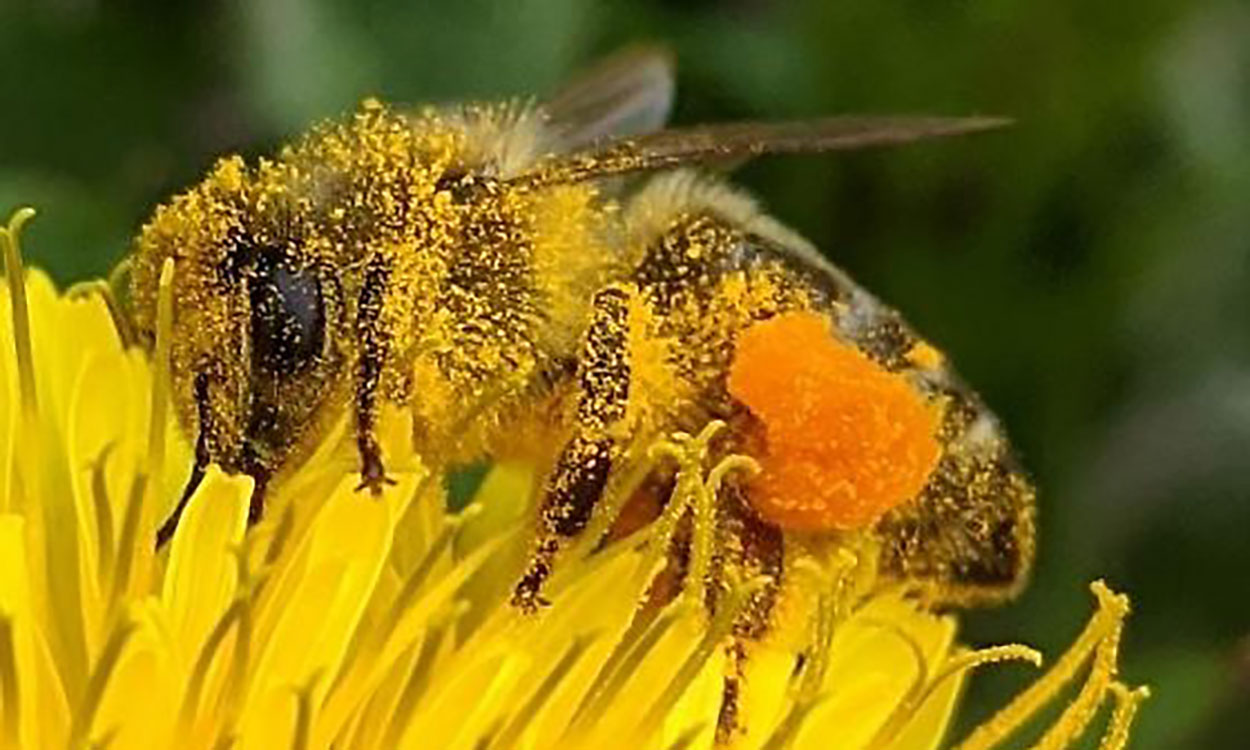
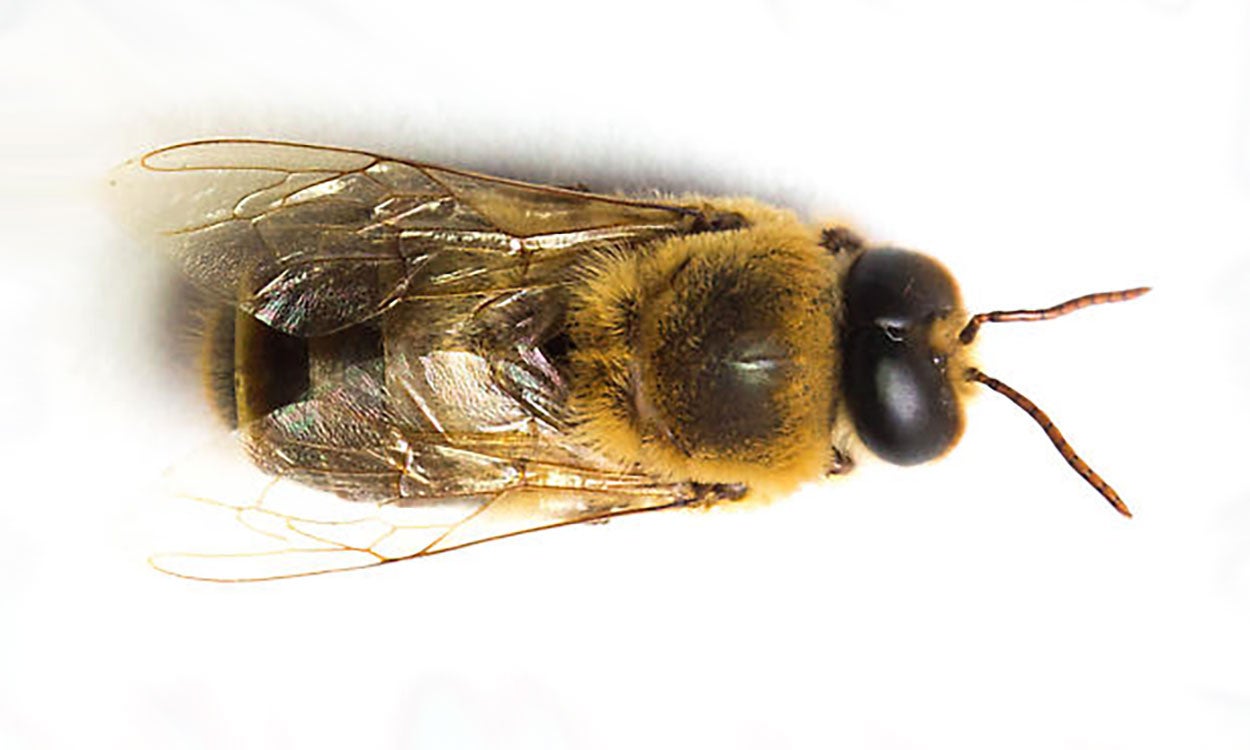
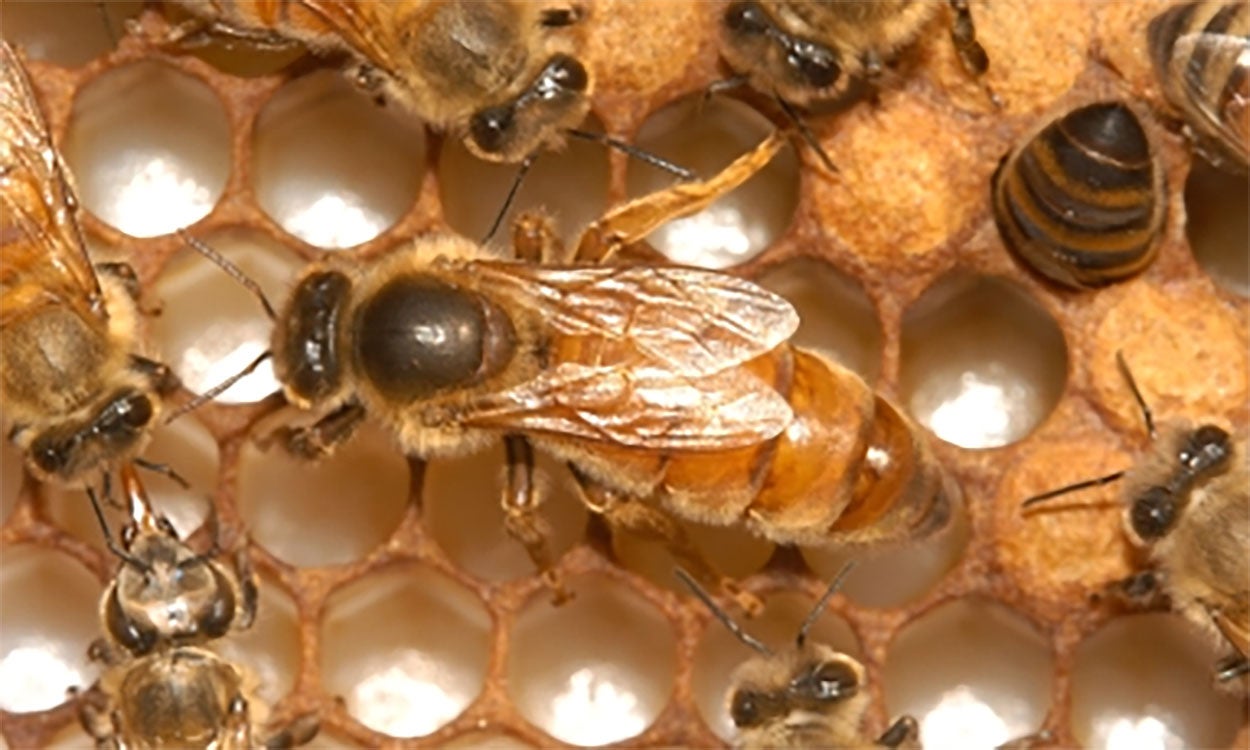
Bicolored Striped-Sweat Bee (Agapostemon virescens)
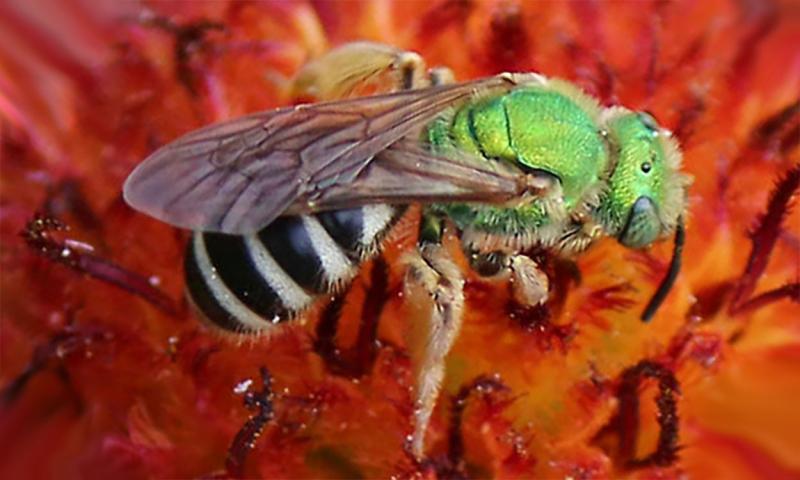
The bicolored striped-sweat bee is just one of many native bee species found in South Dakota. They have a bright, metallic-green head and thorax with a striped black and white (female) or yellow (male) abdomen (Figure 5). They forage on a wide range of flowers, but are commonly found on coneflowers, asters and sunflowers, where pollen is collected on their hind legs (Figure 6). Bicolored striped-sweat bees do not have large colonies like the honeybee, but they do have small aggregations, where each female is responsible for her own young. Nests are constructed in the ground in sparsely vegetated areas, which can include bare spots in yards, as well as garden beds. There are two generations of females and one generation of males each year. Mated females from the previous year emerge in the spring and begin to construct a nest and lay eggs. The second generation of females and males emerge in late summer, where mating occurs, males die off and the females overwinter in their natal nests.
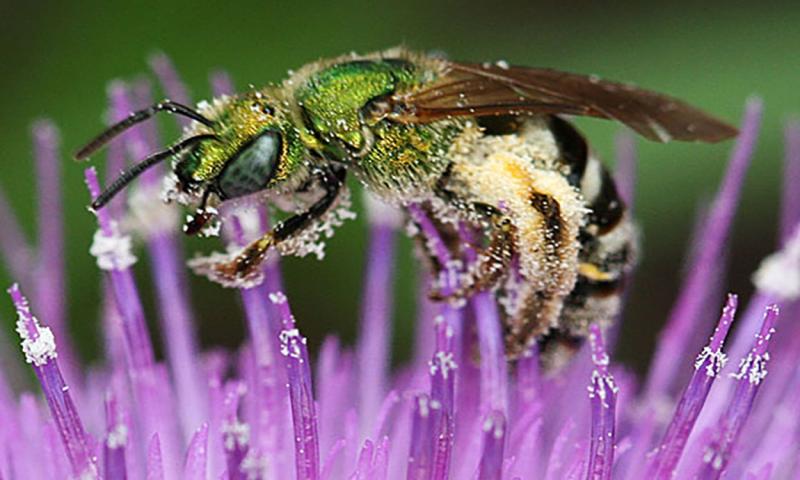
Management
When a honey bee colony becomes too large or crowded, the queen will lay eggs that will eventually become new queens, and she will promptly leave the hive, taking a large portion of the workers with her. This mass exodus event is known as swarming, and its sole purpose is to start a new colony. Most of the time a honey bee swarm will go unnoticed, but occasionally they can occur on houses, or even on a person’s car. In this case, it is best to call local apiarists (beekeepers) to have the swarm safely removed and relocated. Swarming honey bees are generally docile, however it is always possible to get stung. If an allergic reaction occurs, seek medical attention immediately. Honey bees and bicolored striped-sweat bees are both beneficial insects and provide extremely important pollination services in both agricultural and residential areas. Therefore, no management is needed (besides planting more flowers for them to pollinate!).


